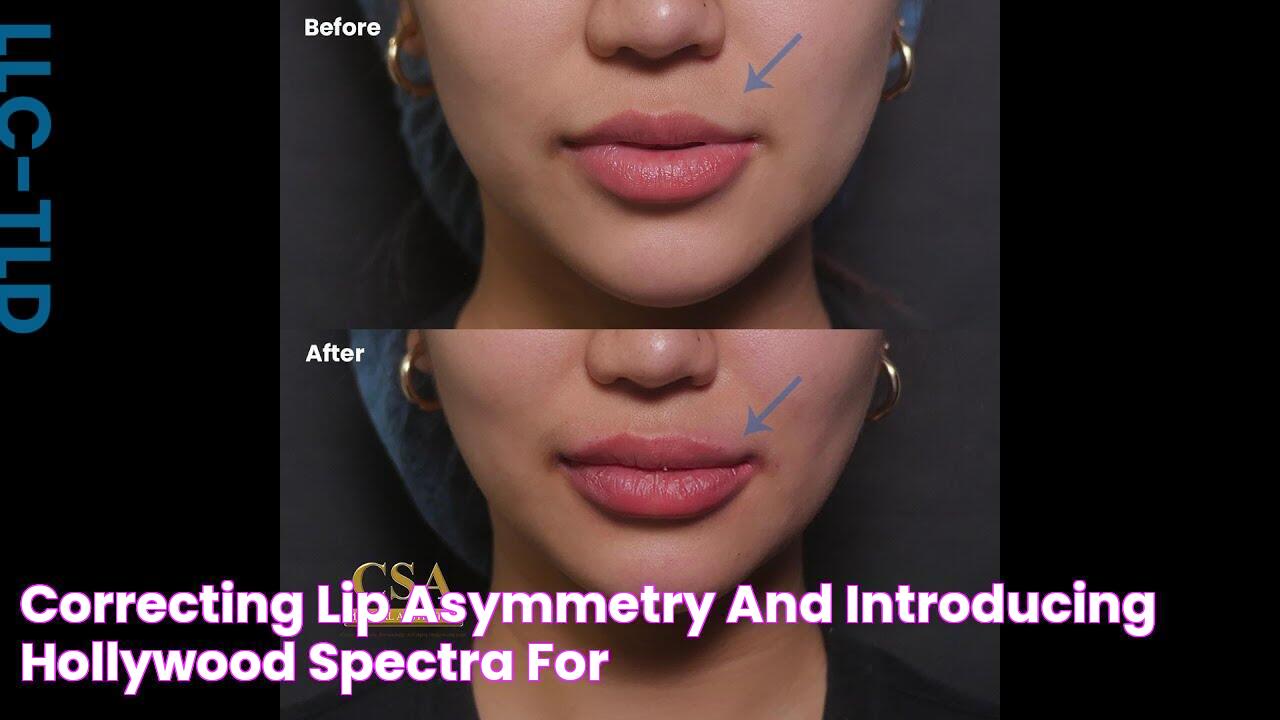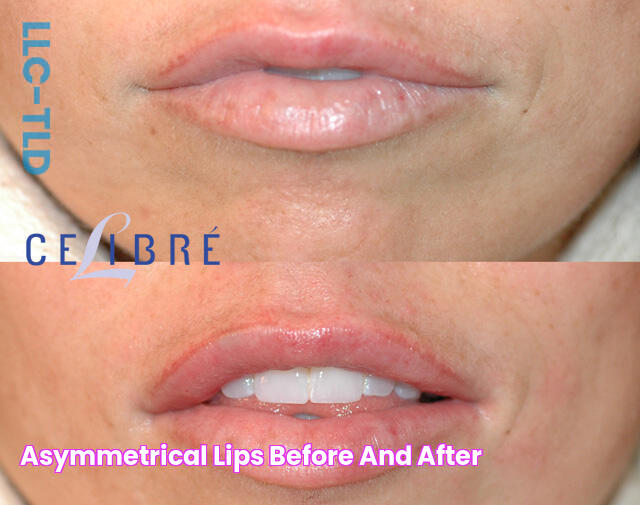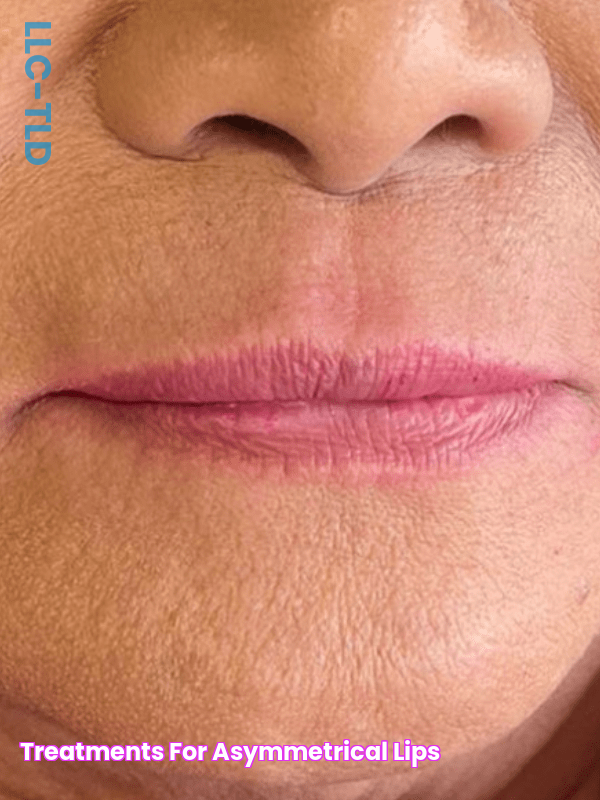Why Do My Lips Seem Asymmetrical After Plastic Surgery?
Asymmetrical Lips refer to a condition in which the lips appear uneven or misaligned, with one side looking different from the other. It can be a natural variation or result from various factors, including genetics, injury, or certain medical conditions.
Asymmetrical lips are common and usually do not pose any health concerns. However, some underlying causes may require medical attention. Understanding the potential causes and associated symptoms can help individuals make informed decisions about seeking professional advice.
This article delves into the potential causes of asymmetrical lips, exploring both natural variations and underlying medical conditions. It also highlights the importance of seeking medical evaluation for persistent or severe asymmetry to rule out any underlying health issues.
Read also:2025 The Thrilling Career Of Sherilyn Fenn Zombie
Why Do My Lips Look Asymmetrical in POS
Asymmetrical lips, characterized by an uneven or misaligned appearance, can have various underlying causes. Understanding these causes is essential for addressing any potential health concerns and seeking appropriate medical advice when necessary.
- Genetics: Inherited traits can influence lip shape and size, resulting in natural asymmetry.
- Injury: Trauma to the lips, such as cuts or burns, can cause scarring and subsequent asymmetry.
- Neuromuscular Conditions: Neurological disorders affecting facial muscles can lead to uneven lip movement and asymmetry.
- Birth Defects: Certain birth defects, like cleft lip, can result in asymmetrical lip appearance.
- Aging: As we age, the lips naturally lose volume and elasticity, which can contribute to asymmetry.
- Infection or Inflammation: Underlying infections or inflammatory conditions can cause swelling and asymmetry.
- Allergic Reactions: Allergens, such as those found in cosmetics or certain foods, can trigger swelling and lip asymmetry.
- Lifestyle Factors: Smoking, sun exposure, and dehydration can impact lip health and contribute to asymmetry.
It's important to note that while some degree of lip asymmetry is common and usually not a cause for concern, persistent or severe asymmetry may indicate an underlying medical condition. If you're concerned about the appearance or feel of your lips, seeking professional evaluation from a healthcare provider is recommended to determine the underlying cause and discuss appropriate treatment options.
1. Genetics
Genetics play a significant role in determining the shape and size of our lips. Inherited traits from both parents contribute to the unique appearance of each individual's lips. This genetic influence can result in natural asymmetry, where one lip may be noticeably different in shape or size compared to the other.
Understanding the genetic component of lip asymmetry is important for several reasons. First, it helps us recognize that variations in lip appearance are often a result of natural inheritance rather than a cause for concern. Secondly, it can help manage expectations when considering cosmetic procedures to alter lip shape or size, as genetics will ultimately influence the final outcome.
Additionally, recognizing the role of genetics in lip asymmetry can help us appreciate the diversity of human features and promote a more inclusive and accepting view of beauty.
2. Injury
Trauma to the lips, whether from cuts, burns, or other injuries, can disrupt the delicate tissues and structures of the lips, leading to scarring and subsequent asymmetry. Understanding the connection between injury and lip asymmetry is crucial for proper diagnosis, treatment, and management.
Read also:The Ultimate Guide To The Lion King 1994 Cast
- Scar Formation: Injuries to the lips can result in the formation of scar tissue, which can contract and distort the natural shape of the lips. This scarring can cause one lip to appear smaller, thinner, or uneven compared to the other.
- Tissue Damage: Trauma to the lips can damage the underlying muscles, nerves, and blood vessels that support lip function and appearance. This damage can lead to impaired movement, sensation, and lip contour, contributing to asymmetry.
- Infection and Inflammation: Injuries to the lips can increase the risk of infection and inflammation, which can further exacerbate swelling, asymmetry, and scarring.
- Delayed Healing: The lips are prone to delayed healing due to their constant exposure to saliva and movement. This delayed healing process can prolong the presence of asymmetry and make it more challenging to resolve.
Recognizing the connection between injury and lip asymmetry is essential for seeking prompt medical attention after a lip injury. Early intervention and proper wound care can minimize the risk of scarring and subsequent asymmetry, promoting optimal healing and preserving the natural appearance of the lips.
3. Neuromuscular Conditions
Understanding the connection between neuromuscular conditions and lip asymmetry is crucial for comprehensive diagnosis and effective management. Neuromuscular conditions encompass a range of neurological disorders that impact the nerves and muscles responsible for facial movement, including the lips.
When these nerves or muscles are affected, they may not function properly, leading to uneven movement and asymmetry of the lips. This can manifest in various ways, such as:
- Unilateral Paralysis: Damage to the nerve or muscle on one side of the face can result in paralysis or weakness on that side, causing the lip to droop or appear uneven.
- Facial Tics: Involuntary muscle contractions, known as facial tics, can affect the lips, causing them to twitch or move asymmetrically.
- Synkinesis: Abnormal muscle movement patterns, where one muscle group involuntarily contracts when another is activated, can lead to lip asymmetry.
Recognizing the role of neuromuscular conditions in lip asymmetry is essential for several reasons. Firstly, it helps differentiate between natural variations in lip appearance and asymmetry caused by an underlying neurological disorder. Secondly, it guides appropriate medical evaluation and treatment, as the underlying neuromuscular condition may require specific interventions.
Furthermore, understanding this connection allows for better patient counseling and support. Individuals with neuromuscular conditions affecting lip asymmetry can benefit from therapies aimed at improving facial muscle function, reducing asymmetry, and enhancing overall quality of life.
In conclusion, the connection between neuromuscular conditions and lip asymmetry underscores the importance of comprehensive medical assessment when encountering lip asymmetry. By considering neuromuscular conditions as a potential cause, healthcare providers can accurately diagnose the underlying issue and develop appropriate treatment strategies to address both the functional and aesthetic concerns associated with lip asymmetry.
4. Birth Defects
Birth defects, such as cleft lip, can significantly impact the development and appearance of the lips, leading to asymmetry. Understanding the connection between birth defects and lip asymmetry is crucial for early diagnosis, proper treatment, and comprehensive care.
- Cleft Lip: Cleft lip is a birth defect that occurs when the lip does not fully form during pregnancy, resulting in a split or opening in the lip. This can affect one or both sides of the lip, causing noticeable asymmetry.
- Other Craniofacial Anomalies: Birth defects that affect the development of the face and skull, known as craniofacial anomalies, can also impact lip appearance. These anomalies can cause a range of facial features, including lip asymmetry.
- Syndromic Conditions: Certain genetic syndromes, such as Treacher Collins syndrome, can involve birth defects that affect the lips, leading to asymmetry and other facial abnormalities.
- Prenatal Factors: Environmental factors during pregnancy, such as exposure to toxins or certain medications, can increase the risk of birth defects, including cleft lip, which can result in lip asymmetry.
Recognizing the connection between birth defects and lip asymmetry is essential for several reasons. Firstly, it helps differentiate between natural variations in lip appearance and asymmetry caused by a birth defect. Secondly, it guides appropriate medical evaluation and intervention, as birth defects may require specialized treatment, such as surgical repair or speech therapy.
Furthermore, understanding this connection allows for better patient counseling and support. Individuals with birth defects affecting lip asymmetry can benefit from comprehensive care that addresses both the functional and aesthetic concerns associated with their condition.
5. Aging
The natural aging process can lead to a gradual loss of volume and elasticity in the lips, contributing to the development of asymmetry. As we age, the production of collagen and elastin, proteins responsible for skin firmness and elasticity, decreases. This reduction in collagen and elastin can cause the lips to thin, lose their plumpness, and become more prone to wrinkles and lines.
The loss of volume and elasticity in the lips can result in a range of aesthetic changes, including the appearance of asymmetry. As one side of the lip may age differently from the other, it can lead to unevenness in shape, size, or fullness. This asymmetry can be further accentuated by other factors, such as sun exposure, smoking, and certain lifestyle habits.
Understanding the connection between aging and lip asymmetry is important for several reasons. Firstly, it helps individuals recognize that changes in lip appearance over time are often a natural part of the aging process rather than a cause for concern. Secondly, it can help manage expectations when considering cosmetic procedures to enhance lip volume or address asymmetry, as the natural aging process will continue to influence the results.
Furthermore, recognizing the role of aging in lip asymmetry can promote a more realistic and accepting view of beauty, encouraging individuals to embrace the natural changes that occur with age.
6. Infection or Inflammation
When exploring the causes of asymmetrical lips, it is essential to consider the potential role of underlying infections or inflammatory conditions. Infections and inflammation can trigger a range of symptoms, including swelling, redness, and pain, which can significantly impact the appearance of the lips.
- Bacterial Infections: Bacterial infections, such as herpes simplex virus (HSV) and staphylococcal infections, can cause sores, blisters, and swelling on the lips, leading to asymmetry.
- Fungal Infections: Fungal infections, like oral candidiasis (thrush), can manifest as white or yellow patches on the lips, accompanied by inflammation and soreness, contributing to lip asymmetry.
- Inflammatory Conditions: Inflammatory conditions, such as cheilitis (inflammation of the lips) and allergic reactions, can cause swelling, redness, and cracking of the lips, resulting in an uneven appearance.
- Autoimmune Diseases: Certain autoimmune diseases, like lupus and Sjogren's syndrome, can affect the lips, causing inflammation, dryness, and swelling, leading to asymmetry.
Understanding the connection between infections, inflammation, and lip asymmetry is crucial for several reasons. Firstly, it helps differentiate between temporary asymmetry caused by an infection or inflammatory condition and asymmetry due to other underlying causes. Secondly, it guides appropriate medical evaluation and treatment, as addressing the underlying infection or inflammation is essential for resolving the lip asymmetry.
Recognizing the role of infections and inflammation in lip asymmetry promotes timely diagnosis and intervention, helping individuals regain lip symmetry and alleviate any associated discomfort or pain.
7. Allergic Reactions
Allergic reactions are a common cause of lip asymmetry, often overlooked or misdiagnosed. Allergens, such as those found in cosmetics, skincare products, certain foods, and even dental materials, can trigger an immune response that leads to inflammation, swelling, and asymmetry of the lips.
Understanding the connection between allergic reactions and lip asymmetry is crucial for several reasons. Firstly, it enables individuals to identify and avoid potential allergens that may trigger lip swelling and asymmetry. Secondly, it guides appropriate medical evaluation and treatment, as addressing the underlying allergy is essential for resolving the lip asymmetry.
Recognizing the role of allergic reactions in lip asymmetry promotes timely diagnosis and intervention, helping individuals regain lip symmetry and alleviate any associated discomfort or pain. Furthermore, it underscores the importance of careful product selection, particularly for cosmetics and skincare products, to minimize the risk of allergic reactions and their associated impact on lip appearance.
8. Lifestyle Factors
Understanding the connection between lifestyle factors, such as smoking, sun exposure, and dehydration, and lip asymmetry is essential for maintaining optimal lip health and appearance. These factors can significantly impact the delicate skin of the lips, leading to dryness, inflammation, and premature aging, which can contribute to the development of asymmetry.
Smoking, in particular, is a major culprit in lip damage. The chemicals present in cigarettes constrict blood vessels, reducing blood flow and oxygen supply to the lips. This deprivation of nutrients and oxygen can lead to thinning of the lips, loss of elasticity, and increased susceptibility to wrinkles and lines. Over time, this damage can manifest as unevenness or asymmetry in lip appearance.
Similarly, excessive sun exposure without proper protection can harm the lips. The ultraviolet (UV) rays from the sun can penetrate the delicate lip skin, damaging collagen and elastin fibers responsible for maintaining lip fullness and shape. This damage can lead to premature aging, dryness, and the formation of fine lines and wrinkles, contributing to lip asymmetry.
Dehydration is another common lifestyle factor that can impact lip health. When the body does not receive adequate hydration, the lips can become dry, chapped, and more prone to cracking. This dryness can lead to discomfort, peeling, and an uneven appearance, further contributing to lip asymmetry.
Recognizing the role of these lifestyle factors in lip asymmetry empowers individuals to make informed choices to protect and preserve their lip health. By limiting smoking, practicing sun safety measures, and maintaining adequate hydration, individuals can reduce their risk of developing lip asymmetry and maintain a more symmetrical and youthful lip appearance.
FAQs about Asymmetrical Lips
This section addresses frequently asked questions and misconceptions surrounding asymmetrical lips, providing concise and informative answers to enhance understanding and empower individuals with the knowledge they need.
Question 1: What causes asymmetrical lips?Asymmetrical lips can result from various factors, including genetics, injury, neuromuscular conditions, birth defects, aging, infections or inflammation, allergic reactions, and lifestyle factors such as smoking, sun exposure, and dehydration.
Question 2: Is it normal to have asymmetrical lips?Yes, some degree of asymmetry in lip appearance is common and usually not a cause for concern. However, persistent or severe asymmetry may indicate an underlying medical condition, and seeking professional evaluation is recommended.
Question 3: Can asymmetrical lips be corrected?Depending on the underlying cause, asymmetrical lips may be amenable to correction. Treatment options can range from non-invasive measures like lip exercises and dermal fillers to surgical interventions in cases of severe asymmetry or underlying medical conditions.
Question 4: What are the potential health implications of asymmetrical lips?In most cases, asymmetrical lips do not pose significant health concerns. However, underlying medical conditions, such as neuromuscular disorders or birth defects, may require specific medical attention or treatment.
Question 5: How can I prevent asymmetrical lips?While some causes of asymmetrical lips are not preventable, adopting healthy lifestyle practices can minimize the risk of developing asymmetry. This includes protecting the lips from sun exposure, avoiding smoking, maintaining adequate hydration, and promptly addressing any underlying medical conditions that may affect lip appearance.
Question 6: When should I seek professional help for asymmetrical lips?It is advisable to seek professional evaluation if you experience persistent or severe lip asymmetry, especially if accompanied by other symptoms such as pain, swelling, difficulty speaking or eating, or any sudden changes in lip appearance.
By understanding the causes, potential health implications, and available treatment options for asymmetrical lips, individuals can make informed decisions about their health and well-being.
Tips for Understanding and Addressing Asymmetrical Lips
Understanding the causes and potential implications of asymmetrical lips is essential for maintaining optimal lip health and appearance. Here are some tips to help you navigate this condition:
Tip 1: Identify Potential CausesAsymmetrical lips can have various causes, ranging from genetics to underlying medical conditions. If you notice persistent or severe asymmetry, consider seeking professional evaluation to determine the underlying cause and appropriate treatment options.Tip 2: Protect Your Lips from External FactorsLifestyle factors such as smoking, sun exposure, and dehydration can contribute to lip damage and asymmetry. Protect your lips by avoiding smoking, practicing sun safety measures, and maintaining adequate hydration.Tip 3: Consider Non-Invasive Treatment OptionsFor mild to moderate asymmetry, non-invasive treatments like lip exercises and dermal fillers may help improve lip symmetry. These options are relatively less invasive and can provide subtle enhancements.Tip 4: Explore Surgical Interventions for Severe CasesIn cases of severe asymmetry or underlying medical conditions, surgical interventions may be necessary to correct the lip asymmetry. These procedures require careful evaluation and skilled surgical expertise to achieve optimal results.Tip 5: Seek Professional Advice for Persistent AsymmetryIf you experience persistent or severe lip asymmetry, it is crucial to seek professional advice from a healthcare provider or cosmetic surgeon. They can assess the underlying causes, recommend appropriate treatment options, and monitor your progress.Tip 6: Embrace Natural VariationsIt is important to recognize that some degree of asymmetry in lip appearance is common and often a natural variation. Embracing these variations can promote a more positive body image and reduce the pressure to conform to unrealistic beauty standards.By following these tips, you can gain a deeper understanding of asymmetrical lips, make informed decisions about your health and appearance, and achieve a more confident smile.Conclusion
Asymmetrical lips, a condition where the lips appear uneven or misaligned, can be caused by a variety of factors, ranging from natural variations to underlying medical conditions. Understanding the potential causes and implications of asymmetrical lips is essential for maintaining optimal lip health and appearance.
By recognizing the role of genetics, injury, neuromuscular conditions, birth defects, aging, infections or inflammation, allergic reactions, and lifestyle factors in lip asymmetry, individuals can make informed decisions about seeking professional evaluation, exploring treatment options, and adopting healthy practices to prevent further asymmetry.
Remember, embracing natural variations in lip appearance promotes a more positive body image. However, persistent or severe asymmetry may indicate an underlying medical condition, and seeking professional advice is highly recommended for appropriate diagnosis and treatment.
The Incredible Life And Legacy Of Michael J. Pollard
Dive Into The Enchanting World Of Syren De Mer: Discover Its History And Allure
The Women In David Muir's Life And Their Impact


